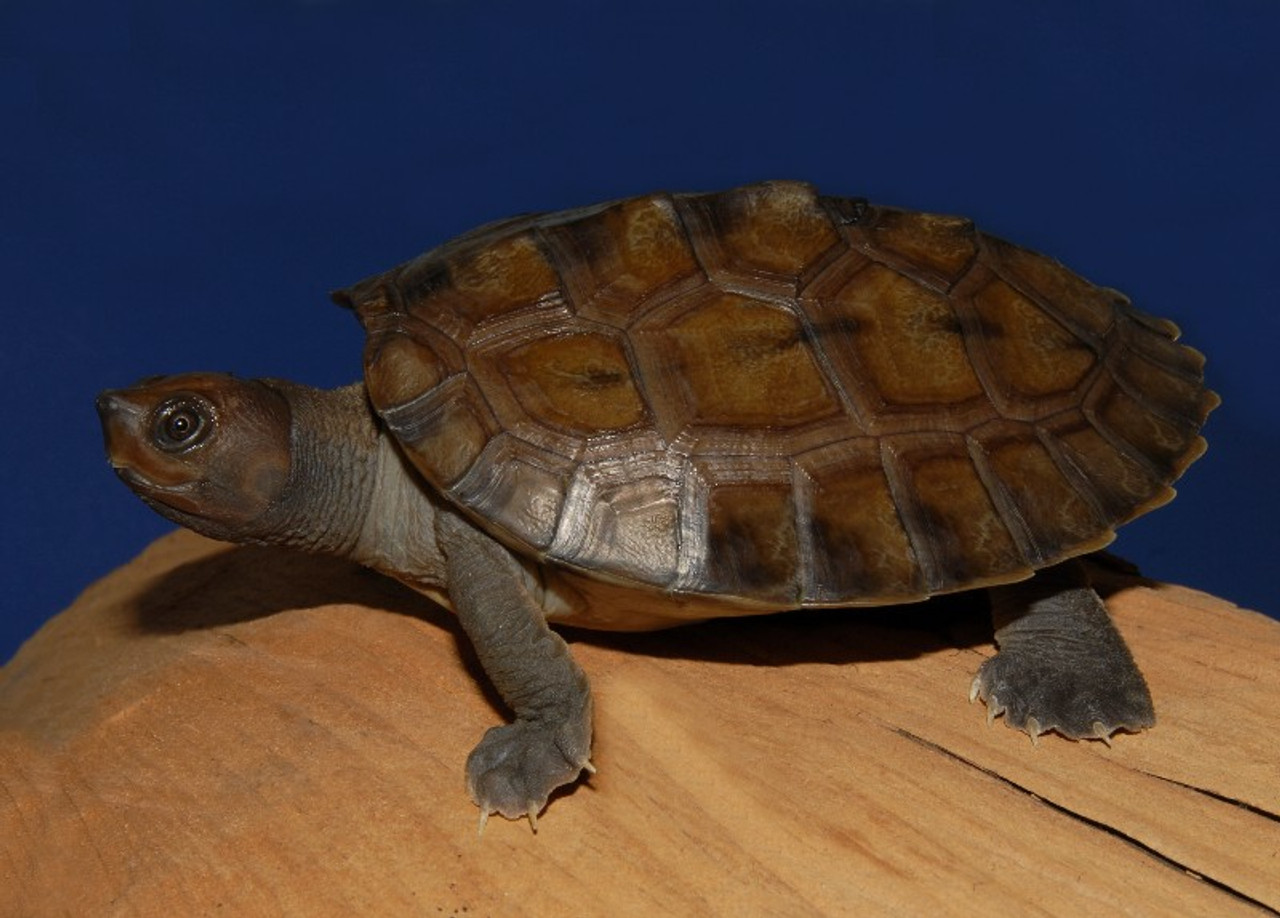Download Diamondback Terrapin Care Sheet ![]()
Our Turtle & Tortoise Care Sheets are meant as a general guideline to caring for your Turtle/Tortoise. Every specific species requires its own unique care - while many species are overlapping and can be kept with other species that have similar needs. For even more details about the needs of a specific species or for ideas about which different species will go well together (many do), please contact us. Thank you!
GENERAL
Diamondback Terrapins have become one of the most popular species of North American turtles being kept by turtle breeders. They are hardy, inquisitive, and a myriad of geographic varieties and color patterns exist.
DISTRIBUTION
The seven subspecies of Diamondback Terrapins are found along the East Coast of the United States, west to Texas and south to Florida.
SIZE
Adult male Diamondbacks grow to 5 inches (12 cm) and females up to 9 inches (24 cm).
ENVIRONMENT & ENCLOSURE
Young, captive-hatched Diamondback Terrapins thrive in captivity as long as their enclosures are thoughtfully prepared. They enjoy clean, filtered, and aerated water with a neutral to slightly acidic pH. Set them up in a 20-gallon long aquarium similar to a Slider enclosure and give them plenty of basking areas with hot spots of 90° F (32° C) and offer them live plants and a variety of commercial diets and live foods. Captive-produced Diamondback Terrapins, in addition to being very tame, are hardy and readily accept this variety. They will grow quickly and can reach breeding size in 3-4 years (males) and 5-7 years (females).
Good water quality, provided by proper filtration, is imperative to the well-being of Diamondback Terrapins. If kept in poor water conditions with a sub-optimal diet, Diamondback Terrapins will often show a range of shell problems including "warping", soft shell disease, and fungal infections. In extreme cases, they will often die.
Therefore, always reduce your likelihood of problems by not crowding Diamondback Terrapins and offer them plenty of clean, aerated water. Indoors, a basic setup in a large aquarium, tub, or stock tank will be sufficient to hold a pair or trio of adult diamondback terrapins. Add an efficient filtration system. Diamondback Terrapins are baskers, so add a shop light fixture with UVB-emitting bulbs, and at least one basking spot with a spotlight (100-watt T-Rex Active UVHeat® bulb) mounted above. Add a variety of floating and submerged aquatic plants to the terrapin enclosure. In addition to helping keep the water clean and healthy, plants will add some variety to their diet.
We suggest a water temperature of 76-78° F (24-26° C) and the optimal pH for captive Diamondback Terrapins seems to be in the 6.8 to 7.0 range. In much of their natural range, Diamondback Terrapins are found in brackish water. Therefore, many keepers add salt to their enclosures. Most keepers feel that Diamondback Terrapins raised in captivity do not require this raised salinity level, but we believe that some aquarium or marine salt helps. Salinity prohibits or greatly reduces the growth of many types of bacteria. We add about one tablespoon per gallon for our Diamondback Terrapins' enclosures both inside and outside.
These turtles love the sun! Basking is an important part of a Diamondback Terrapin's daily routine and sturdy basking sites should be available to babies, juveniles, and adults.
DIET
As carnivores most Diamondback Terrapins will readily accept any number of commercial turtle diets. We suggest a mixture of three or four different high-quality types. Fish, frozen crayfish or shrimp, and earthworms should add to the variety. Freeze-dried krill or brine shrimp can also provide a great treat for these turtles.
HEALTH
Wild-caught Terrapins tend not to acclimate to captivity well unless a large, natural environment such as an outdoor pond is provided. They are typically quite nervous and seem to stress easily. Wild specimens occasionally exhibit shell problems that might be related to changes in salinity and pH. (And no doubt the stress of entering a captive situation.) There are many successful and thoughtful Diamondback Terrapin breeders in the United States, and captive-hatched babies are generally healthy and grow quickly. They are parasite-free and stress-free, so working with them is a win-win proposition.
Poor water quality often leads to eye problems in these turtles. Lack of direct sunlight, UVB-emitting bulbs, or poor diet can lead to these ocular problems as well as to shell deformities and other nutrition-related problems.
Ornate Diamondback Terrapin
M. t. macrospilota from northern Florida and along the west coast of Florida, is recognized by the light yellow to orange centers to its scutes.
Texas Diamondback Terrapin
M. t. littoralis has a dark, heavily grooved carapace with a dorsal keel. It has gray skin with dark spots or speckling and typically has a pretty white to grayish-blue head. This subspecies is found from eastern Louisiana to east Texas.
RECOMMENDED READING
- Wikipedia – Terrapin Turtles
- Ernst, C.H., J. Lovich, and R. W. Barbour. 1994. Turtles of the United States and Canada. Smithsonian Institution Press.
- Gurley, R. 2003. Keeping and Breeding Freshwater Turtles. Living Art publishing. Ada, Oklahoma.
- Gurley, R. 2005. Turtles in Captivity. ECO Herpetological Publishing and Distribution. Lansing, Michigan.
- Pritchard, P. 1979. Encyclopedia of Turtles. TFH, Inc. Neptune, New Jersey.
- Seigel, R. A. 1980. Courtship and mating behavior of the Diamondback Terrapin Malaclemys terrapin tequesta. J. Herp. 14: 420-421.

